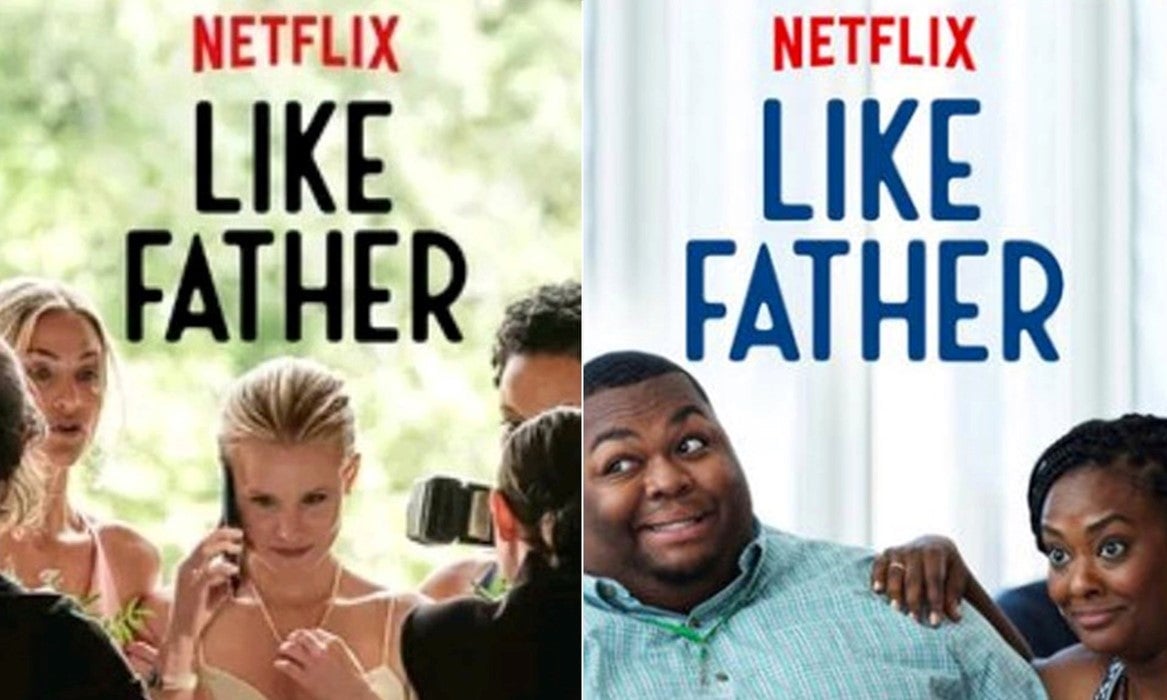Why are black Netflix viewers seeing ads showing minor black characters from movies?
Netflix is being called out for seeming to target customers based on race after a Twitter user noticed the site appeared to be generating thumbnails with black cast members on them, even if those characters played minor roles in the actual production.


Netflix is being called out for seeming to target customers based on race after a Twitter user noticed the site appeared to be generating thumbnails with black cast members on them, even if those characters played minor roles in the actual production.
Netflix denies that it customizes content based on a viewer’s race. But Stacia L. Brown noticed a strange trend when she saw that the homepage artwork shown to her for the film Like Father, starring Kelsey Grammar and Kristen Bell, featured two black actors, Leonard Ouzts and Blaire Brooks, who played bit roles in the movie.
Likewise, she noted that the rom-com Set it Up, a film about a young white couple’s office romance, was advertised with an image of non-white actors Lucy Lui and Taye Diggs, even though their storyline was secondary to the plot.
Brown took to Twitter to see how prevalent the practice might be.
Other Twitter users weighed in, noting that Sierra Burgess is a Loser and The Good Cop, both shows with majority-white casts, had black people featured prominently in the homepage artwork shown to them by Netflix.
For comparison, Kelly Quantrill (@codetrill) shared that she, a white person, saw mostly white cast members in the ads for those same productions.
It’s true that everyone’s Netflix homepage looks a little bit different, thanks to the company’s algorithms. But Netflix denies that it considers demographics when choosing the artwork shown to users.
“Reports that we look at demographics when personalizing artwork are untrue,” a Netflix spokesperson told Quartz. “We don’t ask members for their race, gender, or ethnicity so we cannot use this information to personalize their individual Netflix experience. The only information we use is a member’s viewing history.” The spokesperson confirmed that the thumbnails served up with the titles “do differ and regularly change. This is to ensure that the images we show people are useful in deciding which shows to watch.”
Netflix explained in a blog post last year that it uses A/B testing to personalize recommendations for its 137 million subscribers. Normally, this kind of optimization is a useful way for Netflix users to find content they’d find interesting based on their watching habits and preferences.
Last year Netflix rolled out an algorithm called “Artwork Personalization.” With this, multiple images are created for each title on the platform, and are rotated based on the viewer and the customer’s viewing history. The company used the film Good Will Hunting as an example, explaining that for romcom fans, the artwork would show Matt Damon canoodling with Minnie Driver, while comedy fans would see Robin Williams.
Brown and others who weighed in online noted that the kinds of personalization they were seeing seemed more misleading than helpful.